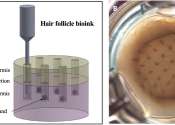Understanding the deep relationship between plants and the wind
As Earth's climate continues to change, a plant's ability to adapt to its shifting environment is critical to its survival. Often, to stay alive a plant must move locations by releasing its seeds, but plants are rooted in ...









